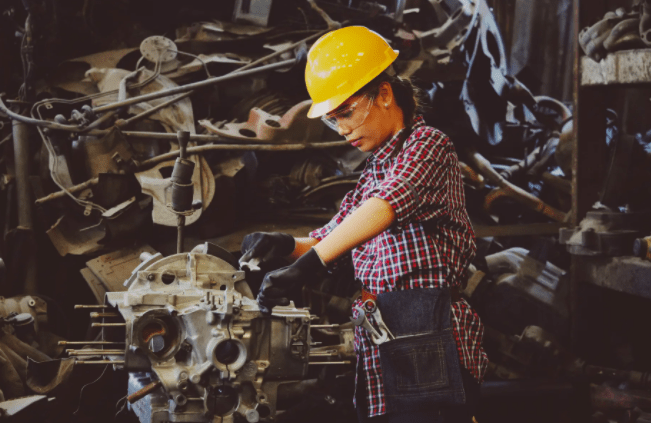Dozens of components come together to make appliances and devices function properly. You’ll find everything from nuts and bolts to belts, wires, and bearings in the inner mechanisms of machines. Whether these working systems are in factories, homes, or somewhere in between, the machines all require specific sets of parts to do their jobs. For many devices, compression springs are among the components that help make them operate.
Narrowing Down The Options
Countless types of springs are available, ranging from leaf to disc. Each one operates in a unique way to either exert or absorb force. Compression springs are some of the most common. They’re used in a long list of applications. Some occur on a massive industrial scale whereas others are incredibly small. They’re important components in several types of mechanisms, many of which are found in everyday items, such as door locks, automobiles, pens, and clocks.
What are Compression Springs?
These types of springs are the highly recognizable spiral varieties most people are familiar with. In their natural states, their coils are somewhat open. When pressure is applied to them, the springs tighten or compress. At that point, they store energy. Once the force is relieved, the springs release the built-up energy and return to their initial forms. If you’re ever seen a spring launch itself from a trampoline while someone was jumping on it, you’ve witnessed this process in action.
Looking at the Six Common Compression Springs Categories
Several types of these widely used springs are available. They come in various shapes, sizes, and compositions. Each of these factors influences the amounts of pressure they can handle and the amounts of energy they exert. Some of the most common are as follows.
Conical Compression Springs
As the name indicates, conical springs are shaped like cones. One end is small and narrow, and the coils gradually widen along the length of the spring. These are often used in spring-loaded push buttons and automobile suspension systems. If you have a device that uses standard cylindrical or nine-volt batteries, conical springs help hold the batteries in place.
Volute Springs
Volute springs are conical springs, but they’re built a bit differently than their counterparts. Rather than having traditional wire coils, they’re made of curled sheets of metal. They’re often able to handle heavier loads and more force than regular conical springs.
Straight Coil Springs
Whereas conical springs are narrow at one end and wide at the other, straight coil springs are the same width throughout. Their coils are uniform distances apart. These are among the most commonly used types of springs.
Variable Pitch Springs
Like straight coil springs, variable pitch springs have coils that are the same diameter. Their coils are more tightly wound at either end than in the middle, though. These types of springs are capable of handling rapid cycles of compression and decompression.
Convex Springs
Convex springs are narrower at each end than they are in the middle. This gives them a bulging appearance even when they’re at rest. They’re used in toys, furniture, and many other applications.
Concave Springs
As opposed to convex springs, concave varieties are narrow in the middle and bulge on either end, much like an hourglass. Their shape gives them more stability for certain uses than other types of springs can provide. They also remain centered more easily.
All Things Considered
These are the most common compression spring categories available to businesses. Each one has its strengths and disadvantages. Which one is best depends on your unique requirements? Whether you need springs for the products you manufacture or to use in machinery, you’re sure to find one that suits your needs.
- Why Your Startup Should Start as It Means to Go On
- Empower Your Business with GridPanel Comprehensive Web Scraping Solutions
- Understanding the Role of Elastic Fibers in Modern Fabrics
- Cyber Defenders: A Look at the Global Cybersecurity Industry
- Elevate Your Business with Strategies from an Entrepreneur Author




